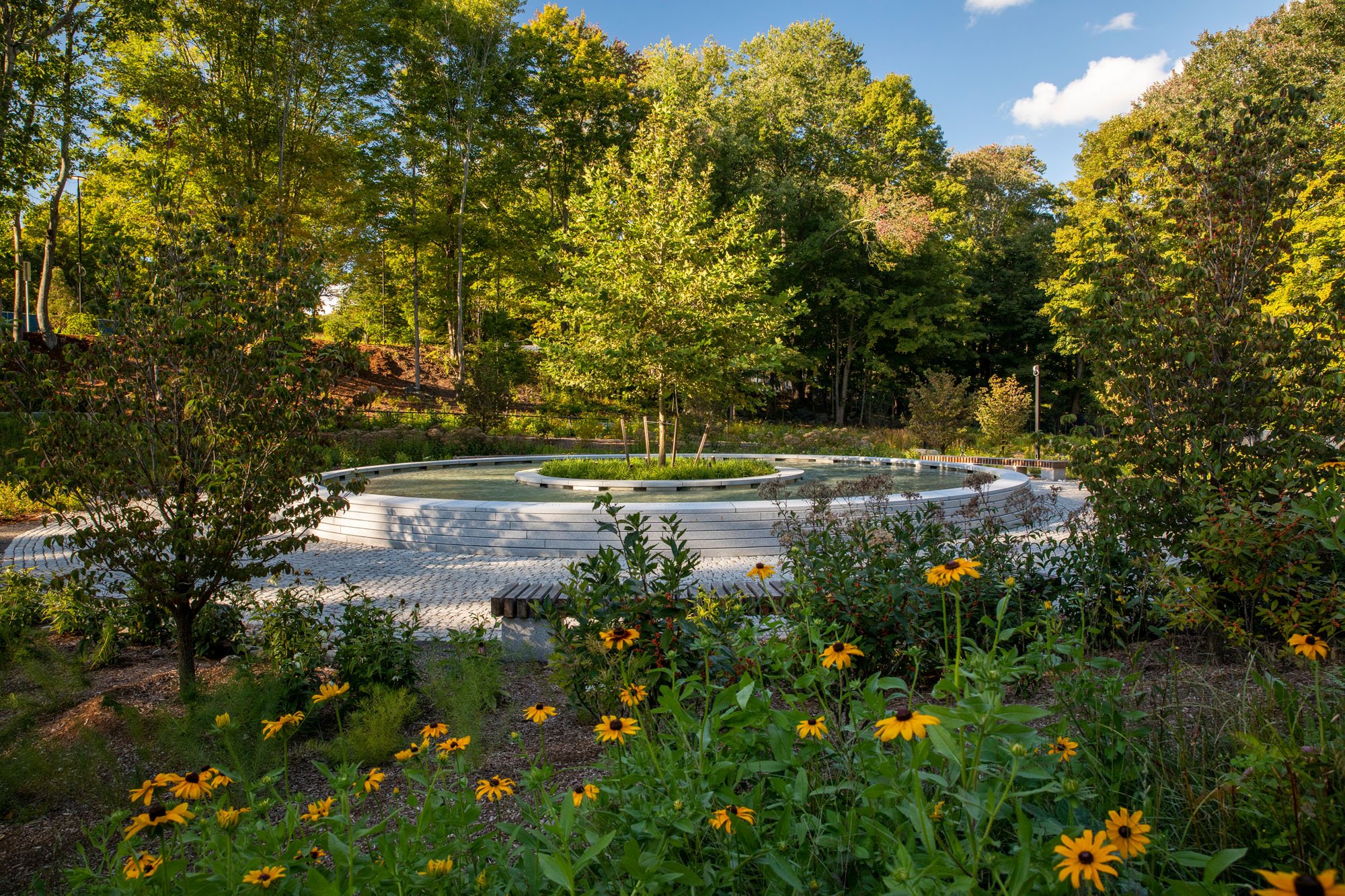
November 17, 2022
A Permanent Memorial to the Sandy Hook Massacre Insists on the Possibility of Life After Tragedy
After the December 2012 shooting at Sandy Hook Elementary School in which a gunman murdered twenty children and six adults, an outpouring of support fell on the small Connecticut town of Newtown. Impromptu memorials materialized near the school, piles of teddy bears, balloons, flowers, and candles making space for mourning. The volume of these gifts was so great that many of them would end up in closets and storage spaces, Newtown overwhelmed with both grief and the physical manifestation of strangers’ solidarity. Eventually, the town decided to incinerate these artifacts. Their ashes, three cubic yards of them, sit inside of the granite and Corten steel podium that marks the entrance to the new Sandy Hook Permanent Memorial designed by SWA.

SWA associate principal Dan Affleck said he and Associate Ben Waldo, the other lead designer on the project, conceived of the ashes as a “sacred soil” and wanted them to be a physical part of the project from the beginning. This sensitivity—not only to the tragic reality of the loss of twenty-six lives, but also to the way in which the people of Newtown have experienced the massacre and its fallout in the ten years since it happened—characterizes the memorial.
Formally, the memorial’s presence is unassuming: Several paths of fine, dark gravel gently curve toward and eventually tangentially meet a cobblestone ring, which in turn surrounds a low, circular granite fountain with a tree at its center. The names of the 26 victims appear carved into the fountain’s edge. Some paths bifurcate, their joints marked by a sweep of small, white stones. Sixteen dogwood trees dot the immediate surrounding landscape, otherwise populated by low plantings. Beyond the paths, a meadow stretches toward the street to the north and the line of trees that separates the site from Sandy Hook Elementary School to the south.

The memorial’s siting was a sensitive matter for the volunteer commission that planned its brief. Having at first dismissed the memorial’s current site because of its lack of infrastructure and its proximity to the Sandy Hook Elementary, the group eventually returned to it and, on hearing school children playing nearby, decided it would be the right place for the project. This openness toward the possibility of life after death is present in the project’s geometry—the non-hierarchical circle of the fountain, in the words of Affleck, is meant to “reconnect people connected by tragedy,” helping them to forge new relationships with each other and with the past—as well as in the choice of flora for the landscape: “[The meadow] is planted so that there’s lots of sequential blooming through the seasons,” said Tara Vincenta, principal and founder of Artemis Landscape Architects, the local firm that worked with SWA on the project. And indeed, the meadow is still lush in mid-November.
There was no public opening for the memorial. Instead, on November 12th, it was unveiled in a private ceremony to the parents and loved ones of the victims. This time, candles and flowers, instead of being piled up on the ground, got to float in the fountain, moving with the water’s circular stream, gesturing toward the persistence of life even in the face of deadly tragedy.
Would you like to comment on this article? Send your thoughts to: [email protected]
Latest
Viewpoints
Google’s Ivy Ross Makes Sense of Color
METROPOLIS sits down with Ivy Ross, Google’s vice president of hardware design, to discuss Making Sense of Color, now on view during Salone del Mobile 2024.
Viewpoints
Two Sustainability News Updates for Q2 2024
The building industry makes vital moves toward standardization and transparency on energy efficiency and social impact.
Viewpoints
How the Design Industry Is Navigating the Sustainability Surge
Discover new ThinkLab research that suggests sustainable design is hitting its stride.










